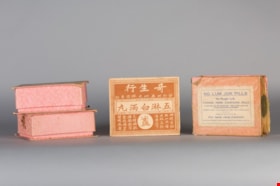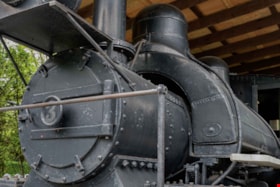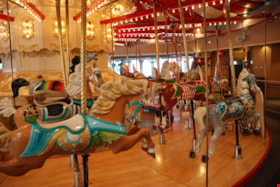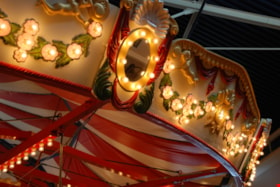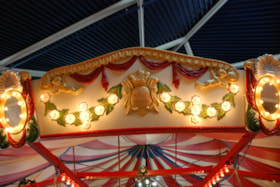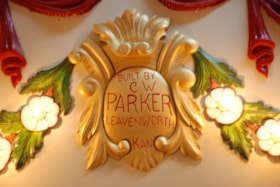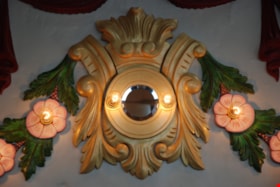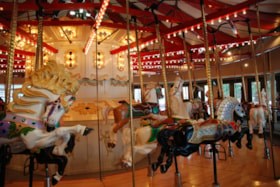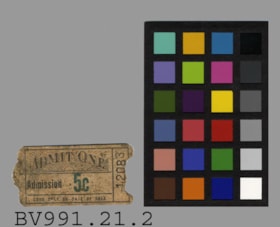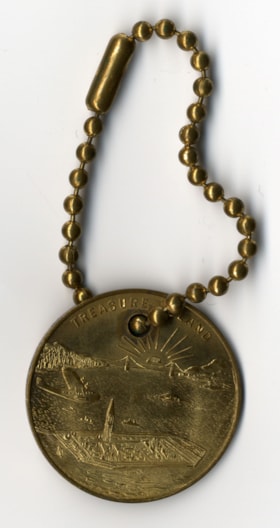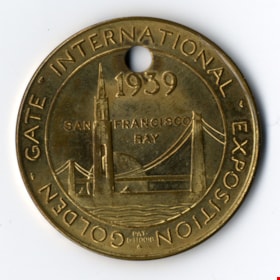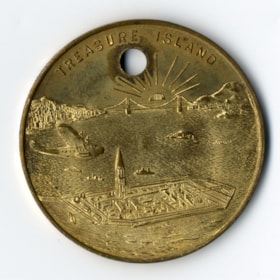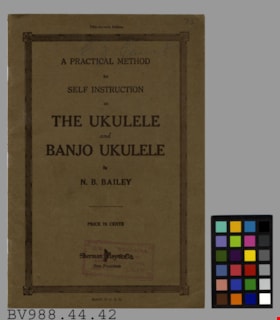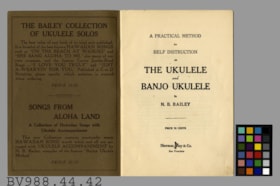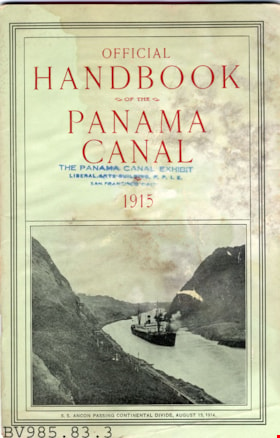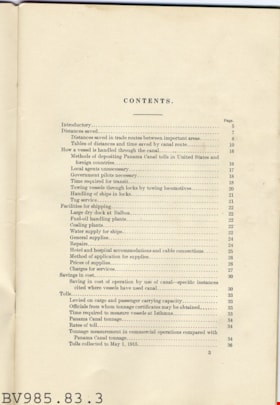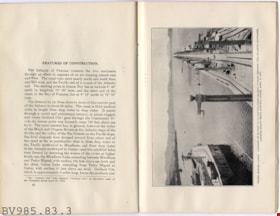Narrow Results By
box
https://search.heritageburnaby.ca/link/museumartifact24043
- Repository
- Burnaby Village Museum
- Accession Code
- HV975.5.535
- Description
- Box, pink with white flowers; lid has brown label on bottom; "Lum Jok Pills".
- Object History
- This item originates from the Chinese Herbalist Store "Way Sang Yuen Wat Kee & Co.", Victoria B.C.
- Classification
- Container
- Marks/Labels
- English translation adjusted to white turbidity pills. The characters literally translate to: company, issue, old Chinatown in San Francisco, five, drench, white, turbid, pill; take twice daily morning and evening, take three mace each time, take with tea, it is appropriate to eliminate the consumption of tobacco, alcohol, and food that is fatty or with dry-heat). This medicine is located in San Francisco Chinatown. English packaging label: Ng Lum Jok Pills. Net weight 1/4 lb. Chinese Herb Compound Pills. A liver tonic and for constipation. Their action assists the natural circulation of the blood. Directions - Take a dose of 3 drs. 2 or 3 times daily. Made in the U.S.A. by Kay Sang Herb Company. 843 Clay Street, San Francisco, California, U.S.A. This product is used to treat gonorrhea, and whittish/cloudy urine. It is made of a variety of ingredients and is used to treat discharge, warmth in the bladder, unclear urine, and nocturnal emission. It reduces inflammation and pain. The manufacturer recommends that the product not be taken with tobacco, alcohol, fatty foods, or with dry-heat.
- Measurements
- 4.5 cm in height x 8 cm in width
- Maker
- Kay Sang Herb Company
- Country Made
- United States of America
- Province Made
- California
- Site/City Made
- San Francisco
Images
locomotive
https://search.heritageburnaby.ca/link/museumartifact6255
- Repository
- Burnaby Village Museum
- Accession Code
- BV985.16.1
- Description
- The locomotive known as, "Old Curly", is a small construction or logging engine fitted with a saddle tank for water and with two sand domes on top. The engine has a 0-4-4 wheel layout, that is no front truck, 4 driving wheels and a 4 wheel truck under the cab. There is no tender wood or coal was stacked at the rear of the cab. This engine has been altered several times in its career. There is a layer of insulation (asbestos?) between the saddle tank and the boiler. Round pane of clear "headlight glass" located at AB106-GS-6 in June 2019
- Object History
- This locomotive is also known as 'Emory'. The locomotive was nicknamed 'Curly', an expression used to describe the devil. The engine was built in San Francisco in the 1879 and was used during the building of the harbour sea wall. It was likley built by Marshutz & Cantrell. It was acquired by Andrew Onderdonk in 1881 to use during construction of the Fraser Canyon section of the Canadian Pacific Railroad (CPR). The locomotive was the first logging locomotive in this area. It was later used on the section from Savona Ferry to Kamloops. The locomotive was layed up in 1887 and not used for several years until it was purchased by the British Columbia Timber and Trading Company (BCTTC) for use on their logging railway in Surrey. In the early 1900s the engine was shifted from Surrey to the company operations north of Powell River. Its history of use is not known while it was in this area. It was brought back to Vancouver, in a damaged condition and stored on BCTTC property. It was acquired by the CPR and restored as a 50th Anniversary Project in 1930. It was displayed at the Pacific National Exhibition grounds until the 1973 when it was brought to Heritage Village (later BVM) and restored again.
- Marks/Labels
- "213D / No. 104 / T.P. 240 / W.P. 150 / T.P.T. / 1900" stamped into a smooth area above the fire door in the cab. "3" brass number riveted to the front of the boiler and painted into the side of the front lantern.
- Colour
- Black
- Measurements
- The locomotive is 26 feet 2 inches (793cm) long by 9 feet (374.3cm) wide and 12 feet (366cm) to the top of the smoke stack. The locomotive sits on 30 feet of track under a roofed shelter.
- The cab is 10 feet 3 inches (315cm) long by 7 feet 6 inches (228.6 cm) wide and 9 feet 3 inches (284.5cm) high
- Country Made
- United States of America
- Province Made
- California
- Site/City Made
- San Francisco
Images
carousel
https://search.heritageburnaby.ca/link/museumartifact71793
- Repository
- Burnaby Village Museum
- Accession Code
- BV993.50.1
- Description
- C.W. Parker Carousel. Hand-carved wooden carousel built in Leavenworth, Kansas in 1912.
- There are 36 wooden horses and 1 chariot plus 4 cast aluminum ponies. The Carousel has 500 major parts, including 14 rounding boards, 14 shields, 52 scenery panels, 140 mirrors, 28 stationary brass poles and 858 11-watt lights.
- Originally the carousel was powered by a steam engine but is now powered by a three-phase electrical motor capable of 5 horsepower. The speed of the carousel is approximately 5 revolutions per minute.
- The carousel is housed in the Don Wrigely Pavilion at the Burnaby Village Museum and is in operation during the museum's open hours.
- Object History
- This carousel was built in 1912 at Leavenworth Kansas by C.W. Parker and was the 119th one made by them.
- It was originally sold in 1913 to Mr. F.K. Leggett of Houston Texas for $5,886.00 and was originally equipped with a steam engine and "wishbones/grass-hopper/jumping horse" mechanisms. It toured Texas for two years with the Lone Star Circus then in 1915 the machine was shipped back to the factory.
- It is believed that the machine was rebuilt by the factory, had some fancier horses and heavier rounding boards added. The jumping mechanism may have been changed then as well.
- Some of the horses are c.1917 and some 1920-22.
- The factory records consulted do not tell for certain where the machine went between 1915 and 1936, possibly to San Jose, CA from 1918 until 1922 and then to San Francisco California, or in Tacoma, Washington.
- In 1936 it was purchased, and was in operation at Happlyland in Vancouver by May 1936. The Parker #119 was put into a pavilion which had been built in 1928 by a rival company (Philadelphia Toboggan Company - P.T.C.) and was located next to the "Shoot the Chutes" ride. Here it remained until Happyland was demolished in 1957. Parker #119 was moved to the new small pavillion in Playland until that too was demolished in 1972.
- From 1972 to 1989, Parker #119 was operated outdoors, and was put away each winter. In 1989 it was announced that the carousel would be sold off horse by horse at an auction in New York. Ms. Venus Solano and Mr. Doug McCalum and other local people came together to "Save the Carousel" and formed the "Friends of the Vancouver Carousel Society".
- In May 1989, Burnaby Village Museum agreed to provide a home for the carousel and the "Friends", led by President Don Wrigley, set about raising the $330,000 to purchase the machine. Keith Jamieson, a carousel expert, was brought in to coordinate the rebuilding project. With a lot of hard work, the help of the Government of British Columbia and the support of the Municipality of Burnaby, the carousel was purchased. Funds were also raised to pay for the restoration, and Burnaby agreed to build a new pavilion for it as a Centennial project.
- Measurements
- Diameter: 2.19 metres (40 feet) at the platform
- Outer circumference: 38.1 metres (125 feet)
- Inner circumference: 23.34 metres
- Height: 8.84 metres (29 feet) at the centre
- Weight: 16 metric tons or 16,000kg empty (14 ½ tons) and 19 metric tons loaded (17 tons). Each horse weighs between 28-37 kg (75-100 pounds).
- Maker
- C. W. Parker Company
- Country Made
- United States of America
- Province Made
- Kansas
- Site/City Made
- Leavenworth
- Subjects
- Recreational Devices - Carousels
- Names
- Pacific National Exhibition (PNE)
- Lower Mainland Association of the Friends of the Vancouver Carousel
- C.W. Parker Company
Images
carousel ticket
https://search.heritageburnaby.ca/link/museumartifact33965
- Repository
- Burnaby Village Museum
- Accession Code
- BV991.21.2
- Description
- Marcuce Bros - Ticket. Admission ticket costing 5 cents admitting one person. On the back of the ticket is "MARCUCE BROS SAN FRANCISCO". The ticket is stamped with "12083". The ticket measures 5cm x 2.5cm.
- Object History
- This artifact was found inside a carousel horse during restoration.
- Colour
- Beige
Images
key ring
https://search.heritageburnaby.ca/link/museumartifact41404
- Repository
- Burnaby Village Museum
- Accession Code
- BV001.1.182
- Description
- Key ring with chain; gold-coloured; circular; one face has image of Golden Gate Bridge, water and sun in centre; writing embossed around edge; second face has an aerial shot of the San Francisco Bay including airplane, island, boats, city, moutains, bridge and sun with rays.
- Marks/Labels
- "GOLDEN GATE INTERNATIONAL EXPOSITION", embossed along edge of one face "1939", embossed in centre of one face "PAT./ D.110016", small lettering, embossed at bottom centre of one face, between 'Golden' and 'Exposition' "SAN FRANCISCO / BAY", embossed in centre of one face "TREASURE ISLAND", embossed in top centre of second face
- Subjects
- Personal Gear
Images
music booklet
https://search.heritageburnaby.ca/link/museumartifact4147
- Repository
- Burnaby Village Museum
- Accession Code
- BV988.44.42
- Description
- A Practical Method for Self Instruction - Music Booklet -- [1914]. Music book titled "A Practical Method for Self Instruction on The Ukulele and Banjo Ukulele" by N.B. Bailey. The booklet was published by Sherman, Clay & Co. in San Francisco. Handwritten in pencil at the top of the booklet is "C.J. Caunt". There is a stamp on the cover from a business in Victoria, BC, however most of the stamp is illegible. The booklet was printed by Rayner, Dalheim & Co. Music Printers in Chicago.
- Colour
- Brown
- Maker
- Sherman, Clay & Company
- Country Made
- United States of America
- Province Made
- Illinois
- Site/City Made
- Chicago
- Patent Date
- Copyright 1914
- Title
- A Practical Method for Self Instruction on The Ukulele and Banjo Ukulele
- Subjects
- Documentary Artifacts
- Documentary Artifacts - Sheet Music
- Documentary Artifacts - Booklets
- Music
Images
pamphlet
https://search.heritageburnaby.ca/link/museumartifact6576
- Repository
- Burnaby Village Museum
- Accession Code
- BV985.83.3
- Description
- Official Handbook of the Panama Canal - Booklet -- [1915]. Booklet created by the Washington Government Printing Office. The booklet provides information about shipping facilities, distance saved, cost saving of the canal, tolls, traffic routes, and the Navy's use of the canal. The cover of the booklet is light green with a photograph of a ship passing through the calan. The title of the booklet is printed in red. The cover has been stamped by The Panama Canal Exhibit in San Francisco.
- Country Made
- United States of America
- Province Made
- District of Columbia
- Site/City Made
- Washington
- Title
- Official Handbook of the Panama Canal
- Publication Date
- 1915
